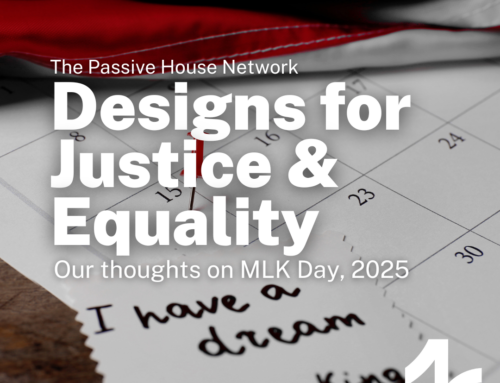This year at Passive House 2020: Choose Your Future NAPHN will have a particular focus on building owners and developers – with three sessions dedicated to peer-to-peer owner/developer panel discussions, on June 24, July 8 and July 22. Owners will be featured in other sessions as well, on retrofits, dormitories, and public schools. This focus is driven by the realization that professionals and manufacturers and policymakers need more understanding of the underlying aspirations, fears, motivations, and capabilities because building owners and developers have tremendous power to move markets if they choose to.
In support of owners and developers, all attendees will receive NAPHN’s soon to be released The Owner’s Manual, a comprehensive resource guide designed to smooth the process of Passive House developments from single-family houses to city-block-sized projects.
“Change is driven by either crisis or curiosity,” says Bronwyn Barry, architect and co-president of NAPHN. In her work she has found Passive House developers generally to be eager learners, with some primarily inspired to act in response to the climate crisis, while others are drawn to Passive House as a means of differentiating their work in the marketplace.
There is also a pool of developers, though, who are seeking predictable results. “These developers want a safe and transparent business model that they know will be viable over the next 10-20 years,” Barry notes. “Passive House is transformative in that it allows businesses to develop a clear plan and chart a logical pathway forward.”
“Historically there hasn’t been enough information for developers,” says Derrick Tillman of Bridging the Gap Development. Most Passive House educational materials are geared toward engineers and designers, Tillman points out, leaving incipient developers to figure out for themselves what the benefits are and how best to proceed. The Owner’s Manual will fill this gap, plotting the path forward by detailing the tactics of experienced developers. Curious about how to secure contractor buy-in? Confused about financing resources? It’s all there and more, shortcutting the learning process from planning to certification.
With the learning curve smoothed out, the cost premium for adopting Passive House can be similarly eased. “Everyone can make it cost-effective once you know what the destination is,” Barry affirms. She points to British Columbia’s Energy Step Code as an exemplary market transformation strategy, because it explicitly lays out a series of specific efficiency targets for building developers, creating a technical roadmap to achieve net-zero energy performance by 2032 at the latest. “The advantage of the BC Energy Step Code is that it has a clear end goal,” she notes, allowing developers to incorporate the steps into their business models or to get ahead of the competition by going straight to the end goal, which is Passive House performance.
Figure out how to clarify your pathway forward and get straight to your end goal at Passive House 2020: Choose Your Future, securing your copy of The Owner’s Manual.




